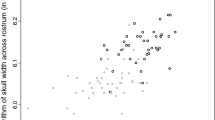Abstract
The analysis of a three-way data set using three-mode principal components analysis yields component matrices for all three modes of the data, and a three-way array called the core, which relates the components for the different modes to each other. To exploit rotational freedom in the model, one may rotate the core array (over all three modes) to an optimally simple form, for instance by three-mode orthomax rotation. However, such a rotation of the core may inadvertently detract from the simplicity of the component matrices. One remedy is to rotate the core only over those modes in which no simple solution for the component matrices is desired or available, but this approach may in turn reduce the simplicity of the core to an unacceptable extent. In the present paper, a general approach is developed, in which a criterion is optimized that not only takes into account the simplicity of the core, but also, to any desired degree, the simplicity of the component matrices. This method (in contrast to methods for either core or component matrix rotation) can be used to find solutions in which the core and the component matrices are all reasonably simple.
Similar content being viewed by others
Author information
Authors and Affiliations
Rights and permissions
About this article
Cite this article
Kiers, H. Joint Orthomax Rotation of the Core and Component Matrices Resulting from Three-mode Principal Components Analysis. J. of Classification 15, 245–263 (1998). https://doi.org/10.1007/s003579900033
Issue Date:
DOI: https://doi.org/10.1007/s003579900033




